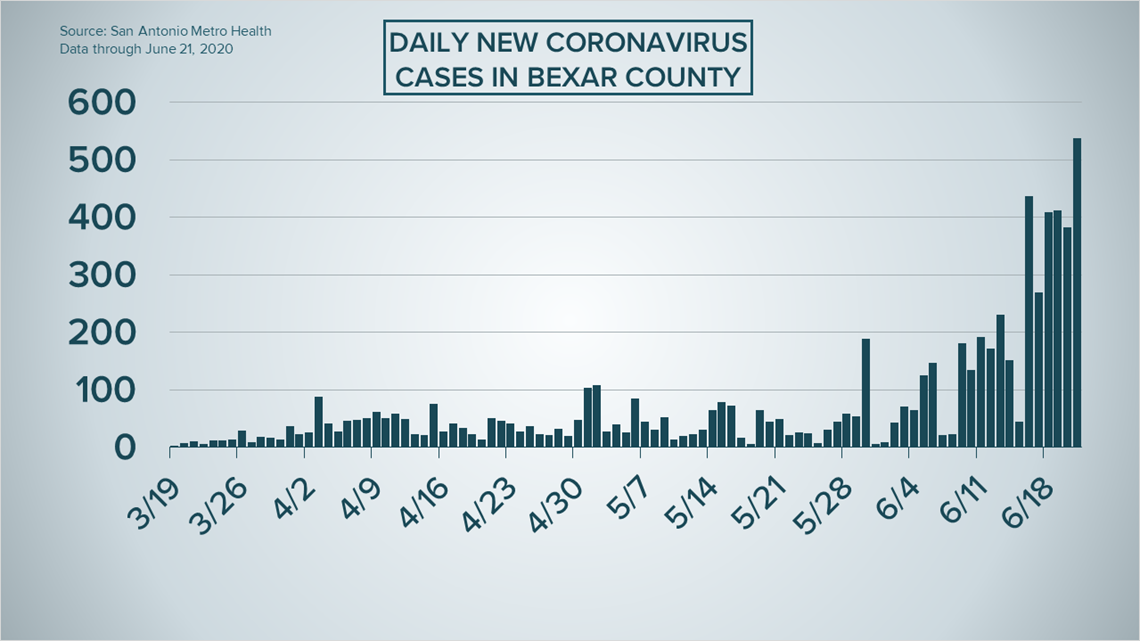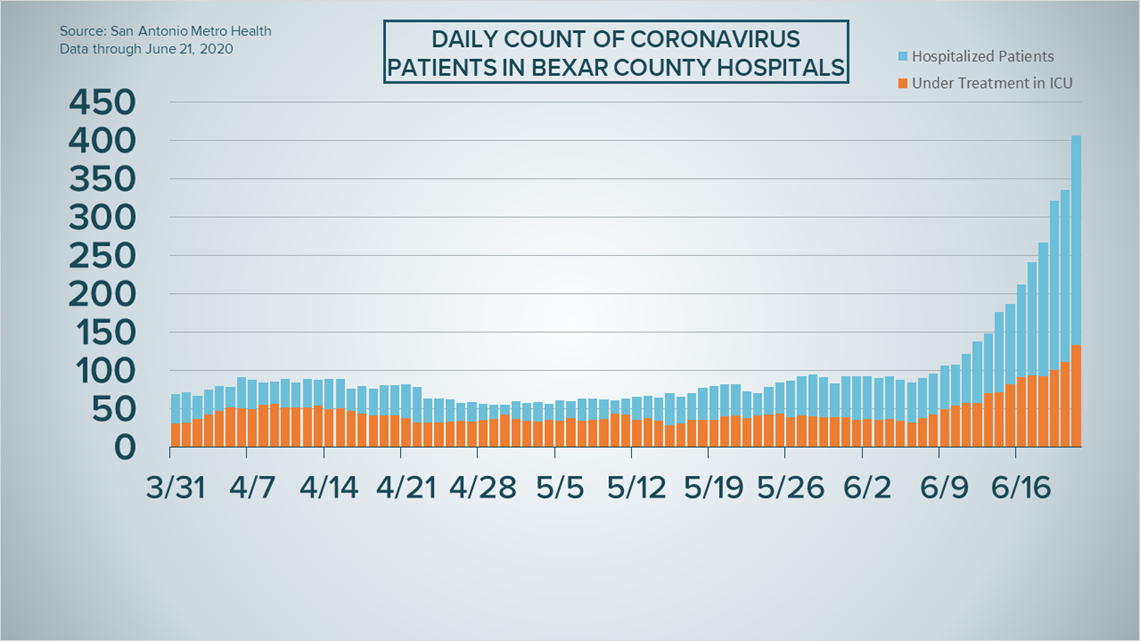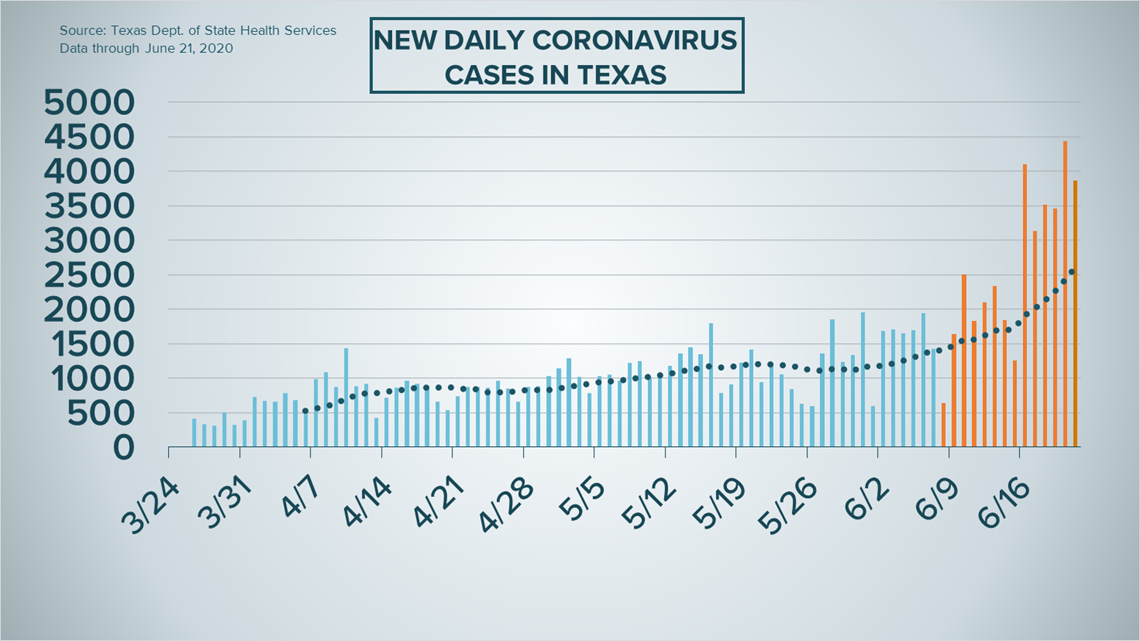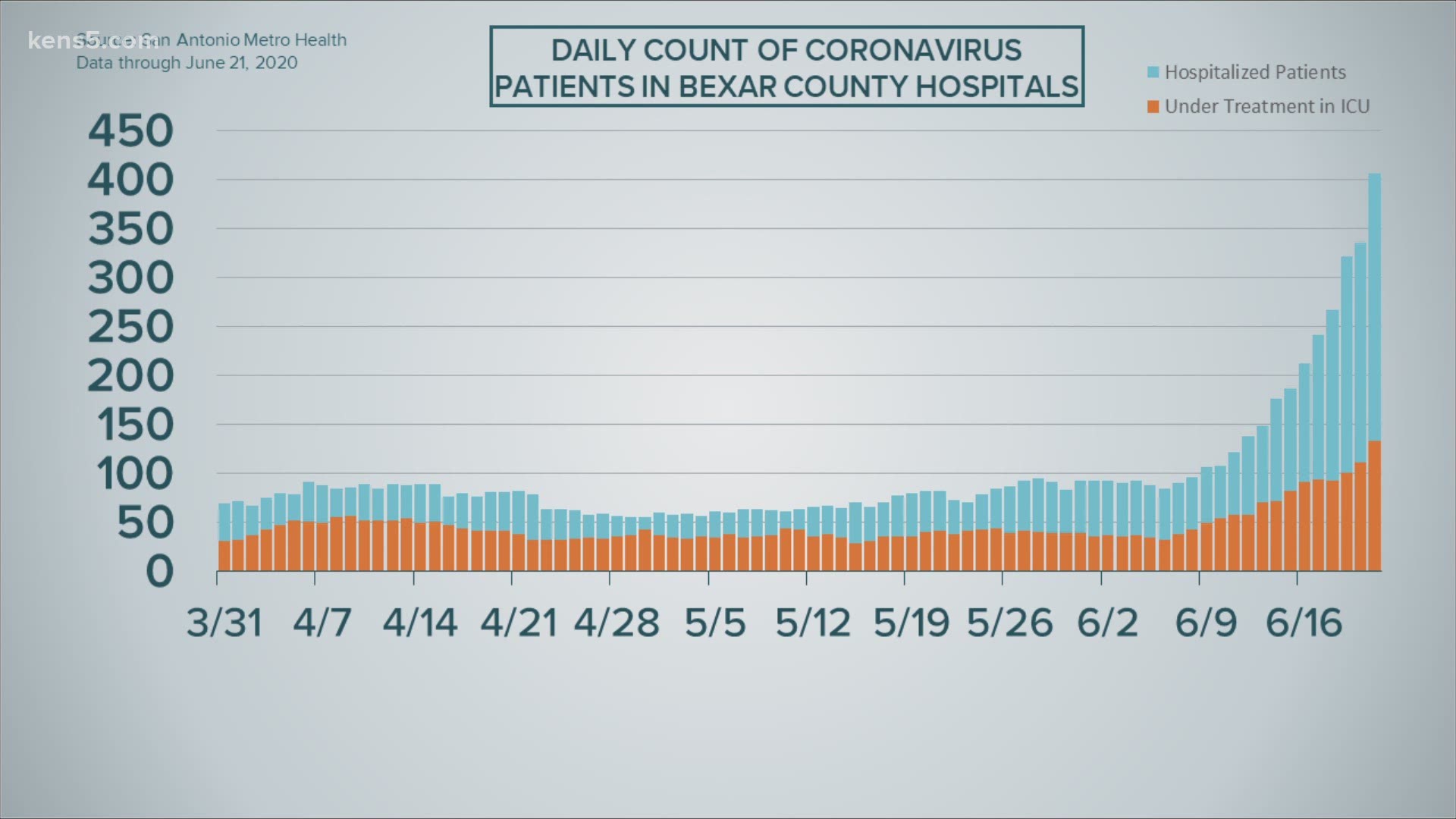SAN ANTONIO — We're tracking the latest numbers from the coronavirus pandemic in San Antonio and across Texas. Here are the latest numbers reported by Bexar and surrounding counties:
- Bexar County: 538 new cases were reported Sunday another record high, and one more death has been confirmed. There is a total of 6,882 cases and 97 fatalities. 336 patients are in local hospitals, and 111 are in intensive care.
- Comal County: 40 new confirmed cases were reported Saturday, along with eight probable cases. The combined total has now risen to 346 confirmed cases with and additional 58 probable cases. Seven people have died in the county, while 157 have recovered. The county's positivity rate is up to 7.11%, the highest since April 23.
- Hays County: 103 new cases Sunday, bringing the total to 1,711 cases and five fatalities in the county. 48% of the country's confirmed cases are people between the ages of 20 and 29.
Here are Friday's full numbers. Bexar County reports them daily at 7 p.m.
How Bexar County is trending:
We're tracking how many coronavirus cases are confirmed in Bexar County each day from the time San Antonio Metro Health began reporting cases more than two months ago. Graphing those daily case numbers along a 14-day moving average provides an accurate picture of the curve in the San Antonio area and the direction we're heading amid the coronavirus.
Bexar County set a new one-day record with 538 new cases reported. The past six days have brought the six largest daily increases in new confirmed cases.


The number of coronavirus patients currently in area hospitals continued its exponential increase over the past 14 days. The city's website said there are now 406 patients in local hospitals, a huge jump of 70. The number of patients in San Antonio area hospitals has more than quadrupled in the last two weeks.


There are now 133 patients in the ICU and 64 on ventilators, both representing a large increase to a record high.
Coronavirus in Texas
Cumulative cases in Texas jumped by 3,866 Sunday according to state health officials, bringing the total to 111,601. This was the second-highest daily increase, and the sixth day in a row with at least 3,000 new lab-confirmed cases reported. Before Tuesday, there were zero such days for Texas.
Here's a look at the 14-day moving average of the new daily coronavirus cases in Texas:


17 more deaths from virus-related complications were also reported, for a total of 2,182.
Meanwhile, hospitalizations in Texas jumped by 162 since Saturday, bringing the total number of Lone Star State residents currently in hospitals with coronavirus to 3,409.
LATEST CORONAVIRUS HEADLINES:
Coronavirus symptoms
The symptoms of coronavirus can be similar to the flu or a bad cold. Symptoms include fever or chills, cough, shortness of breath or difficulty breathing, fatigue, muscle or body aches, headache, new loss of taste or smell sore throat, congestion or runny nose, nausea or vomiting and diarrhea, according to the Centers for Disease Control.
Most healthy people will have mild symptoms. A study of more than 72,000 patients by the Centers for Disease Control in China showed 80 percent of the cases there were mild.
But infections can cause pneumonia, severe acute respiratory syndrome, kidney failure, and even death, according to the World Health Organization. Older people with underlying health conditions are most at risk.
The CDC believes symptoms may appear anywhere from two to 14 days after being exposed.
Human coronaviruses are usually spread...
- Between people who are in close contact with one another (within about 6 feet).
- Through respiratory droplets produced when an infected person coughs, sneezes or talks. These droplets can land in the mouths or noses of people who are nearby or possibly be inhaled into the lungs.
- Some recent studies have suggested that COVID-19 may be spread by people who are not showing symptoms.
Help stop the spread of coronavirus
- Stay home when you are sick.
- Eat and sleep separately from your family members
- Use different utensils and dishes
- Cover your cough or sneeze with your arm, not your hand.
- If you use a tissue, throw it in the trash.
Lower your risk
- Wash your hands often with soap and water for at least 20 seconds. If soap and water are not available, use an alcohol-based hand sanitizer.
- Avoid touching your eyes, nose, and mouth with unwashed hands.
- Avoid close contact with people who are sick.
- Clean and disinfect frequently touched objects and surfaces.
- The CDC recommends wearing a mask or cloth face covering if you have to be out due to an essential service or essential activity such as going to the grocery store.
- If you are 60 or over and have an underlying health condition such as cardiovascular disease, diabetes or respiratory illnesses like asthma or COPD, the World Health Organization advises you to try to avoid crowds or places where you might interact with people who are sick.

